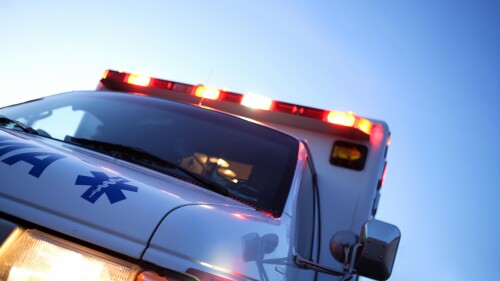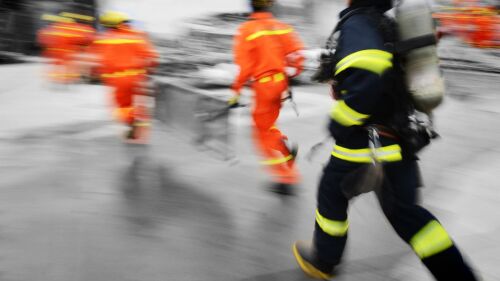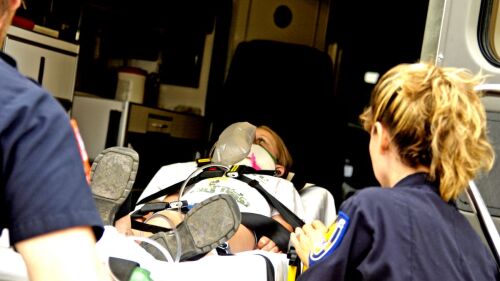BREAKING NEWS
A wrongful death lawsuit claims Hayward police and Falck paramedics repeatedly failed during the restraint and chemical sedation of a suspect, intensifying scrutiny of use of midazolam
Facing the first failed EMS levy in city history, the Clarkston City Council voted unanimously to use reserves to maintain emergency medical services for nine months
NEMSQA’s latest measures report finds that routine, high-frequency actions like preventing hypoxia in TBI and timely trauma alerts drive outcomes more than rarely performed procedures
The FDNY has appointed a veteran paramedic and longtime EMS leader to oversee citywide EMS operations amid ongoing staffing and pay challenges
A total of 10 Marion County Fire employees have been fired following an alleged violent hazing incident at Station 21, as the FD works to address its workplace culture and rebuild public trust
EXCLUSIVES
SPECIAL REPORTS
UPCOMING & ON-DEMAND EVENTS
New insight into the latest technology
Addressing the hidden dangers of cardiovascular disease
Prepare for the impact of extreme weather on critical infrastructure and EMS operations
Creating, developing and sustaining your own program, step by step
Expert perspectives on improving patient outcomes
Learn from a real-world use case of the rescue strike team and the three phases of deployment
Janet Taylor shares assessment and management tips for mastering seizure thresholds, classification and treatment approaches
What if scheduling and finalizing a transport could be done in 60 seconds?
Learn common triggers, assessment findings, and the different phases and classifications of seizures
Key findings from the Verizon Frontline Public Safety Communications survey
A detailed look at the actions leaders can take to implement a systems-level plan to protect their members
Adopting programs to improve EMS service delivery and agency culture
INDUSTRY INSIGHTS
A webinar reviews key cases where the ‘most important vital sign’ helped shape care
It starts with sharpening decision-making skills
Protecting providers starts with a glove that won’t easily fail
Small changes to how EMS approaches airway management and ventilation can make big differences in OHCA outcomes
Avon Protection showcases the effectiveness and durability of its latest scalable protective system, designed for eye, nose and mouth protection in real-world conditions
OFF DUTY
Discover how providers can improve sleep and fight fatigue with simple changes like air filters, blackout curtains and humidity control
True-to-life emergency response finally gets the Hollywood treatment it deserves
Dive into a curated collection of must-read public safety books, from thrilling accounts and leadership lessons from the front lines, to read-aloud children’s favorites
Books
Explore the books EMS leaders, EMS1 contributors and experts recommend to advance your career, build leadership skills and inspire the next generation
How new federal tax rules could affect your paycheck, deductions and long-term savings
From paddleboarding and kayaking to fishing in remote areas, discover the gear, training and self-defense strategies outdoor enthusiasts need to stay safe on the water
Insulated, smart, and high-capacity bottles designed to help first responders beat dehydration on shift and beyond
What they’ll never tell you about why we stay
I lived to retire from the ambulance company
PRODUCT RESEARCH CATEGORIES
Ambulance accessories play a key role in supporting EMS providers during emergency response, patient transport, and on-scene care. This topic covers essential tools and equipment such as oxygen storage systems, interior lighting, stretcher mounts, communication devices, and safety restraints. Reliable ambulance accessories help improve efficiency, protect patients and crew, and maintain readiness for all types of calls. Understanding what accessories are available—and how to use them—can support better outcomes in the field.
Patient care is the foundation of EMS, encompassing the assessment, treatment, and transport of individuals in medical or trauma emergencies. This topic covers essential practices, including airway management, bleeding control, medication administration, and patient monitoring. It also includes protocols, documentation, and communication with receiving facilities. Delivering effective patient care requires clinical knowledge, critical thinking, and adherence to current guidelines. For tools that support care delivery in the field, see Diagnostic Equipment. Explore the articles in this topic to stay informed on essential skills and strategies for high-quality EMS patient care.
The EMS1 EMS Communications product category features products and information for researching EMS communications.
The EMS1 Airway Management product category features information, product listings and resources for researching airway management.
Patient monitoring plays a critical role in prehospital care, enabling EMS providers to track vital signs, assess patient condition, and detect changes in real-time. Monitoring tools include ECG, pulse oximetry, capnography, and blood pressure tracking. These systems support timely decision-making during transport and handoff to hospital teams. Integrated patient monitoring improves documentation accuracy, care continuity, and patient outcomes. Training on device use and data interpretation is essential. EMS Software is another important topic that explores broader tools used in the field. Explore the articles below for guidance on patient monitoring equipment, protocols, and best practices.
Wellness program software helps fire departments manage health and wellness initiatives for firefighters. These tools support tracking of physical fitness, behavioral health, peer support, medical assessments, and return-to-duty readiness. Wellness program software also helps agencies analyze participation, trends, and outcomes to improve program effectiveness. It supports compliance with NFPA standards and other firefighter health guidelines. Investing in firefighter wellness reduces injuries, sick leave, and burnout.
Dispatch, call centers, and 911 systems are critical components of emergency response. These operations manage call intake, resource allocation, and communication between dispatchers and field units. Efficient systems and well-trained staff help ensure accurate information, quick response times, and coordinated incident management. Technology like CAD, AVL, and integrated radio systems enhances performance and situational awareness. Dispatch, call centers & 911 services must follow state and national standards for operations and training. Emergency Communications is another important topic focused on tools and infrastructure for responder connectivity. Explore the articles below for insights into staffing, protocols, and system improvements.
The CO Screening product category features products and information for researching CO Screening and Testing, also known as Carbon Monoxide Testing, which covers CO Screening products such as CO meters, as well as resources for carbon monoxide first responder rehabilitation.
The EMS1 Capnography product category features products and information for researching capnography’s use by EMS personnel to aid in their assessment and treatment of patients in the prehospital environment. Click here to download a guide to normal/abnormal capnography waveforms.
The Financial, Insurance & Legal Services product category features information and resources for researching Financial Services solutions, as well as insurance options and legal resources, and includes financial leasing options, various types of insurance, mortgage tools and retirement planning assistance.













































